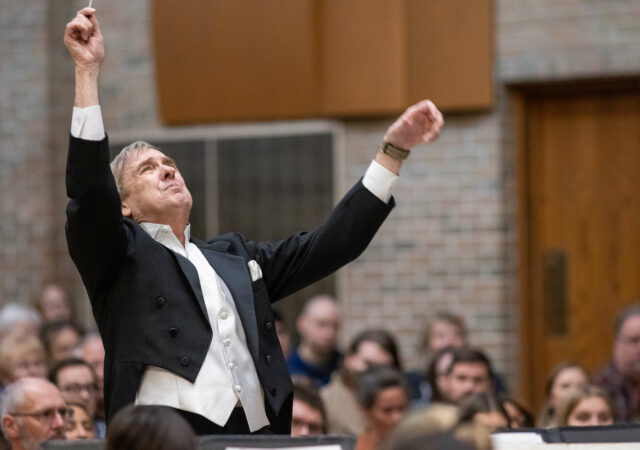By Kim Schave
Fifty Shades of Grey is controversial, to say the least.
Libraries are banning the trilogy of books with that title, a middle school in Pennsylvania is investigating a teacher who handed out a Fifty Shades of Grey word-search puzzle (containing words that the media couldn’t even display) and parents are fuming over the showing of the trailer for the new film with that title during previews shown before a PG-13 movie.

The film’s lead actors have admitted that they had trouble acting out certain scenes in the movie and prefer that their families avoid watching the film. Advocates against domestic violence warn that Fifty Shades romanticizes sexual and other forms of violence. Even BDSM (bondage and discipline, dominance and submission, sadism and masochism) proponents are miffed at the depiction of abuse in the series.
As a parent, I turned a pretty deep shade of red on Christmas Day as a result of the movie’s trailer appearing on the big screen prior to a PG-13 movie I was about to enjoy with my husband and four teenage children. Having celebrated the birth of our Lord and Savior that very morning, it was a shock and grave disappointment to me that a day meant for rejoicing would take such a turn. I would later that day have some difficult conversations with my kids about the scenes they had witnessed.
As you consider the influence this book series and movie may have on your own children, Jonathon Van Maren suggests in an online article, “To everyone who thinks 50 Shades is all sorts of awesome: Please, stop and THINK,” that you ask yourself two questions:
- Would you want your daughter to be in a relationship with the leading male character, Christian Grey?
- Would you want your son to turn into Christian Grey?
Miriam Grossman, M.D., says in another article, “How to Talk to Your Child About Sadomasochism,” that Fifty Shades “teaches your daughter that pain and humiliation are erotic, and your son that girls want a guy who controls, intimidates and threatens.”
This is accomplished through the portrayal of an unhealthy relationship between an unmarried couple — a wealthy business executive, Christian Grey, and a recent college graduate, Anastasia Steele. She agrees to serve as Christian’s submissive in a BDSM relationship which Dr. Gail Dines describes in yet another article, “‘Fifty Shades of Grey’ Boycott Calls For People To Ditch The Film And Give $50,” as being “straight out of porn culture.” It is a relationship that is based on a lie — one that tells women they can love a man out of an abusive situation and find a pathway to a healthy marriage through perverted sexual expressions.
As Christians, we know that a healthy marriage relationship is rooted in the Word of God. The rite of Holy Matrimony in Lutheran Service Book sets the tone for the union with these words: “All persons who marry shall take a spouse in holiness and honor, not in the passion of lust, for God has not called us to impurity but in holiness” (Page 275). The Table of Duties in the Small Catechism lays the foundation for a couple’s duties to one another. The husband is to honor his wife and not be bitter toward her, while the wife is to submit to her husband.
So how does this biblical notion of submission stack up to Fifty Shades?
The scriptural form of submission involves service. The husband as leader loves and cherishes his wife as Christ loved the church, values her as a gift from God and treats her as a partner and co-laborer. In response to his helpful leading, a wife honors and respects her husband and assists him in fulfilling the leadership position that God has given him in the family.
In contrast, Fifty Shades depicts a submissive relationship that is based on manipulation, coercion and abuse in a relationship that is outside the confines of marriage. The genuine form of biblical love that precedes a wife’s submission (one that operates out of freedom and grace, not bondage) is absent. In Satan’s attempt to pervert that which is good, he draws women to find satisfaction in the unhealthy form of submission and bondage found in Fifty Shades.
Within a committed Christian marriage, the foundation for trust, peace and security within the relationship is God’s Word. In Fifty Shades, it is a “safeword” that is mutually agreed upon to signal Grey that his partner wishes for him to cease his abusive activity. This abusive behavior has been denounced by many who have worked with domestic-violence victims as well as conducted research on the topic. Amy E. Bonomi, Lauren E. Altenburger and Nicole L. Walton conducted a study and reported its results in a Journal of Women’s Health article titled “Abuse and harmed identity in Fifty Shades of Gray,” in which the couple’s behavior was analyzed using the U.S. Centers for Disease Control and Prevention’s definition of Intimate Partner Violence. They found that Christian Grey “controls all aspects of the couple’s relationship using the emotional-abuse tactics of stalking, isolation, intimidation/threats and humiliation” (Page 736). Additionally, they found that Anastasia’s response to his behavior is “consistent with those of battered women.” The authors noted the presence of chronic substance abuse, jealousy and underlying mental-health issues (all hallmarks of abusive relationships) in their relationship. Another study that involved surveying young women concluded that those who read at least the first novel in the series (but not all three) were “at increased risk of having, at some point during their lifetime, a partner who shouted, yelled or swore at them and who delivered unwanted calls/text messages — behaviors that are consistent with definitions of verbal/emotional abuse and stalking, respectively.”
Ultimately, what may be summarily dismissed as a piece of fictional literature actually has a great impact on our culture. Bonomi, Altenburger and Walton maintain in their article that individuals “regularly alter their real-world beliefs and attitudes in response to fictional communication.” The authors’ own analysis adds to the growing body of literature that points to the “dangerous violence standards being perpetuated in popular culture” (Page 735). As a result of these concerns, some have called for a boycott of the movie whereby the $50 that would have been spent on tickets and snacks are instead given to a local women’s shelter or domestic violence agency (#50DollarsNot50Shades).
Lest anyone be tempted to think of Christians as overly-modest prudes because of their disapproval of Fifty Shades, a read of the book of Song of Solomon should demonstrate otherwise. In this book, passion and sensuality prevail within the confines of a loving marriage relationship. The healthiest of sexual relationships occur within such an arrangement — one in which the security of a committed marriage exists, one in which Christ is placed at the center, and one in which the husband and wife place the needs of the other before their own. This is the selfless form of love that Jesus modeled for us. Why would anyone want to settle for less than this perfect design that God intended?
Deaconess Kim Schave chairs the LCMS Task Force on Domestic Violence and Child Abuse and is director of project and policy administration in the Synod’s Office of the Chief Administrative Officer.
Posted Feb. 18, 2015





Excellent piece. Thank you.
As someone who has submitted critical comments related to this subject area in the past I feel obligated to offer positive words in praise of a thoughtful response to this cultural phenomenon.
My request/suggestion would be that the author consider posting about or producing other material that addresses why so many (especially so many women) are attracted to these books and now the film. Perhaps that has already been done and I’m just not aware of it. But I think that needs to be dealt with seriously.
Wonderful article, very well written and thought out. Thank you for your references. This is something that has been bothering me about the marketing and sweeping of this story. Too many young girls and elderly women will think this is what a loving relationship is all about.
I’ve always been anti 50 shades for many reasons but what troubled me was that – no matter how difficult, no matter how out of our comfort zone it is – I somehow realised that the Christian response to it couldn’t be to just ignore it or simply dismiss it as porn.
I think Jesus would have gone head to head with it – as He had that knack of doing in all difficult situations – and engage with it on some level that glorified God’s love over the ‘love’ portrayed in the series. I had no idea how to do this though and I like that Christian blogs and writers have tried to do so. The problem was always that – non believers – had no interest in this standpoint and I didn’t have the skill to get over that wall.
I tweeted a lot about my opposition to it and someone sent me a link to a Christian fiction response that takes the original format of the book and then ‘mirrors’ it with a story about God’s love taking in concepts like ‘doulos’ and salvation along the way.
I’ve given it to some friends – the same ones that had no interest in Christian blog posts – and they’ve really been engaged and informed by it and have gone on to engage in real talks about faith underpinned by it. One is (tentatively) attending church.
For me that underpins that the key in the debate is – not to preach to one another about it – but to use it as a chance to outreach. If you find the debate difficult to engage in u may find it helpful. amzn.to/1Ac2x9c